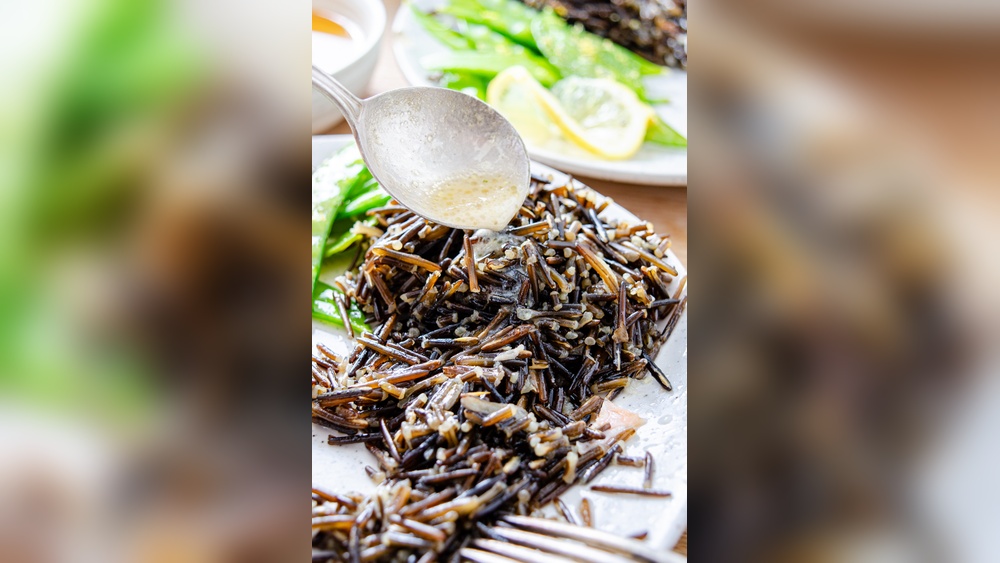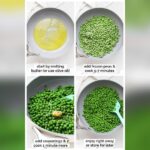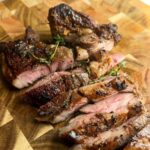If you’ve ever wondered how to cook wild rice to perfection, you’re not alone. Wild rice isn’t just another grain—it has a rich, nutty flavor and a satisfying texture that can elevate any meal.
But cooking it right can feel tricky if you don’t know the simple steps to follow. Whether you want to serve it as a side dish, mix it into salads, or add it to soups, mastering wild rice will open up a world of delicious possibilities.
Stick with me, and you’ll learn easy, foolproof methods that make your wild rice fluffy, tender, and full of flavor every time. Ready to transform your cooking? Let’s dive in!
Wild Rice Basics
Wild rice is not true rice. It is a seed from a water grass. It grows in lakes and rivers in North America. Wild rice has a chewy texture and a nutty flavor. It is popular in soups and salads.
Nutritionally, wild rice is rich in protein and fiber. It has low fat and is gluten-free. It also contains important minerals like zinc, magnesium, and phosphorus. This makes it a healthy choice for many meals.
| Common Varieties | Description |
|---|---|
| Long Grain Wild Rice | Most common type, long and slender grains |
| Short Grain Wild Rice | Shorter, thicker grains with a stronger flavor |
| Hybrid Wild Rice | Cross between wild and cultivated rice, easier to cook |

Preparing Wild Rice
Rinsing wild rice helps remove dust and loose grains. Place the rice in a fine mesh strainer. Run cold water over it until the water runs clear. This step reduces starch and prevents a sticky texture.
Soaking wild rice softens the grains and reduces cooking time. Soak rice in cold water for 4 to 6 hours or overnight. Drain and rinse before cooking. Soaking also helps grains cook evenly.
| Water Type | Effect on Wild Rice |
|---|---|
| Tap Water | Usually fine for cooking; may have minerals |
| Filtered Water | Removes impurities; improves taste slightly |
| Distilled Water | Pure water; may affect flavor subtly |
Cooking Methods
Stovetop Method: Rinse wild rice under cold water. Use 3 cups of water for 1 cup of rice. Bring water to a boil, then add rice. Lower heat and simmer for 45-60 minutes until grains split open. Drain any extra water. Fluff rice with a fork before serving.
Rice Cooker Approach: Rinse rice well. Add 1 cup rice and 3 cups water to rice cooker. Use the “brown rice” or “wild rice” setting if available. Let cooker finish its cycle. Let rice rest for 10 minutes, then fluff and serve.
Oven-Baked Wild Rice: Preheat oven to 375°F (190°C). Boil water with salt and butter. Place rinsed rice in a baking dish, pour boiling water over it. Cover tightly with foil. Bake for 1 hour. Stir before serving for even texture.
Cooking Wild Rice Blends: Follow package instructions. Usually, use 2-3 cups water per cup of rice blend. Cook on stovetop or rice cooker. Check at 40-50 minutes. Fluff and serve. Blends often cook faster than pure wild rice.
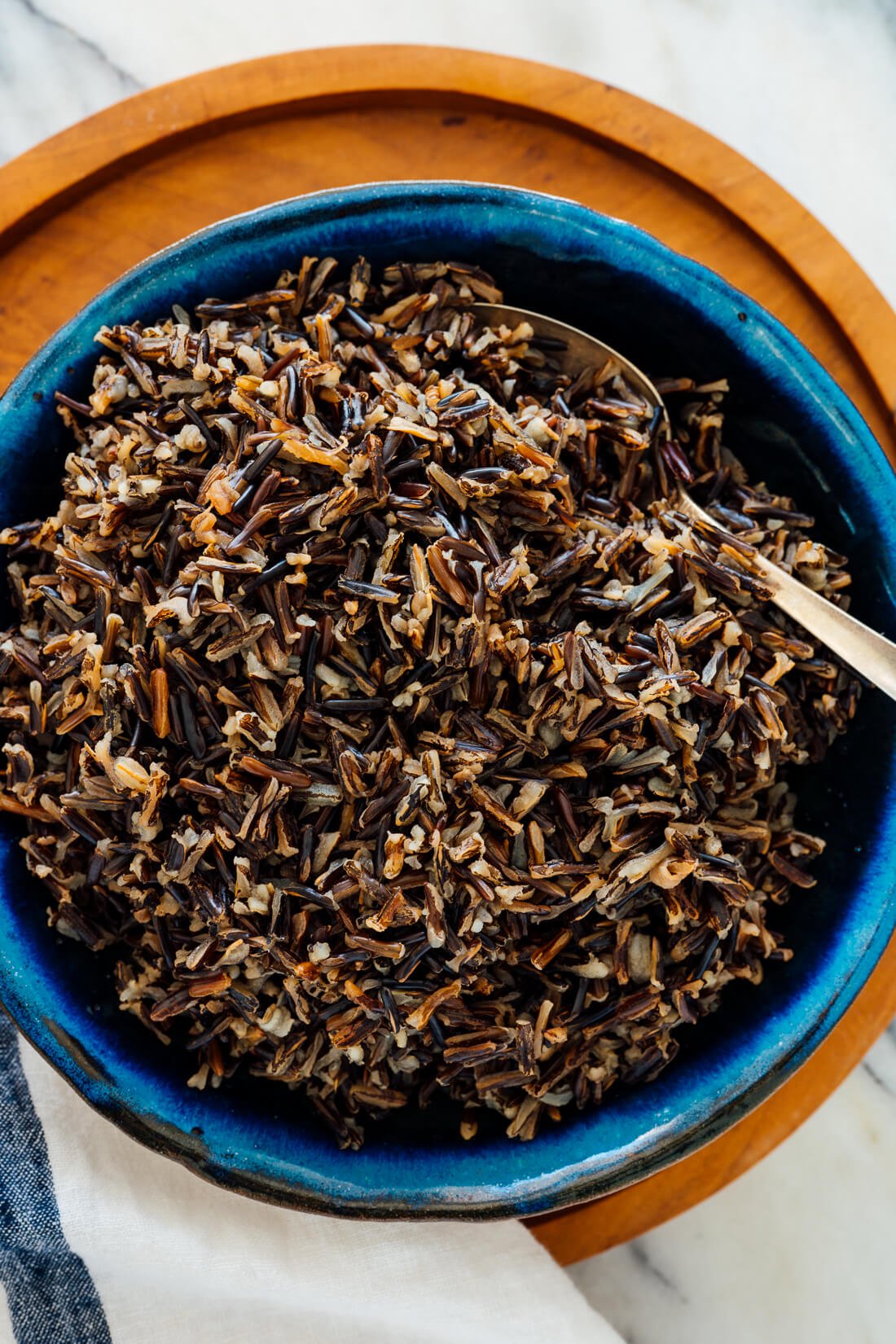
Water To Rice Ratios
The standard water to wild rice ratio is usually 3 to 1. This means 3 cups of water for 1 cup of wild rice. Use more water for softer rice and less for firmer texture.
Adjust the ratio depending on how you like your wild rice. For chewier rice, try 2 1/2 cups water per cup of rice. For softer rice, use 4 cups water per cup of rice.
| Texture | Water to Rice Ratio | Cooking Time |
|---|---|---|
| Chewy | 2.5:1 | 45-50 minutes |
| Standard | 3:1 | 50-60 minutes |
| Soft | 4:1 | 60-70 minutes |
Wild rice takes longer to cook than white rice. It usually simmers for 45 to 70 minutes. Keep the pot covered and check water level often. Add more water if needed to avoid burning or sticking.
Enhancing Flavor
Using broths and stocks instead of water gives wild rice a rich taste. Chicken, beef, or vegetable broth works well. These liquids add depth and flavor to the rice as it cooks.
Seasoning wild rice with herbs like thyme, sage, or rosemary enhances the taste. Salt and pepper are simple but effective. A pinch of garlic powder or onion powder can also improve the flavor.
Adding aromatics like chopped onions, garlic, or celery while cooking lifts the dish. Sauté these in a little oil or butter before adding the rice and liquid. This step creates a fragrant base that makes wild rice more appealing.
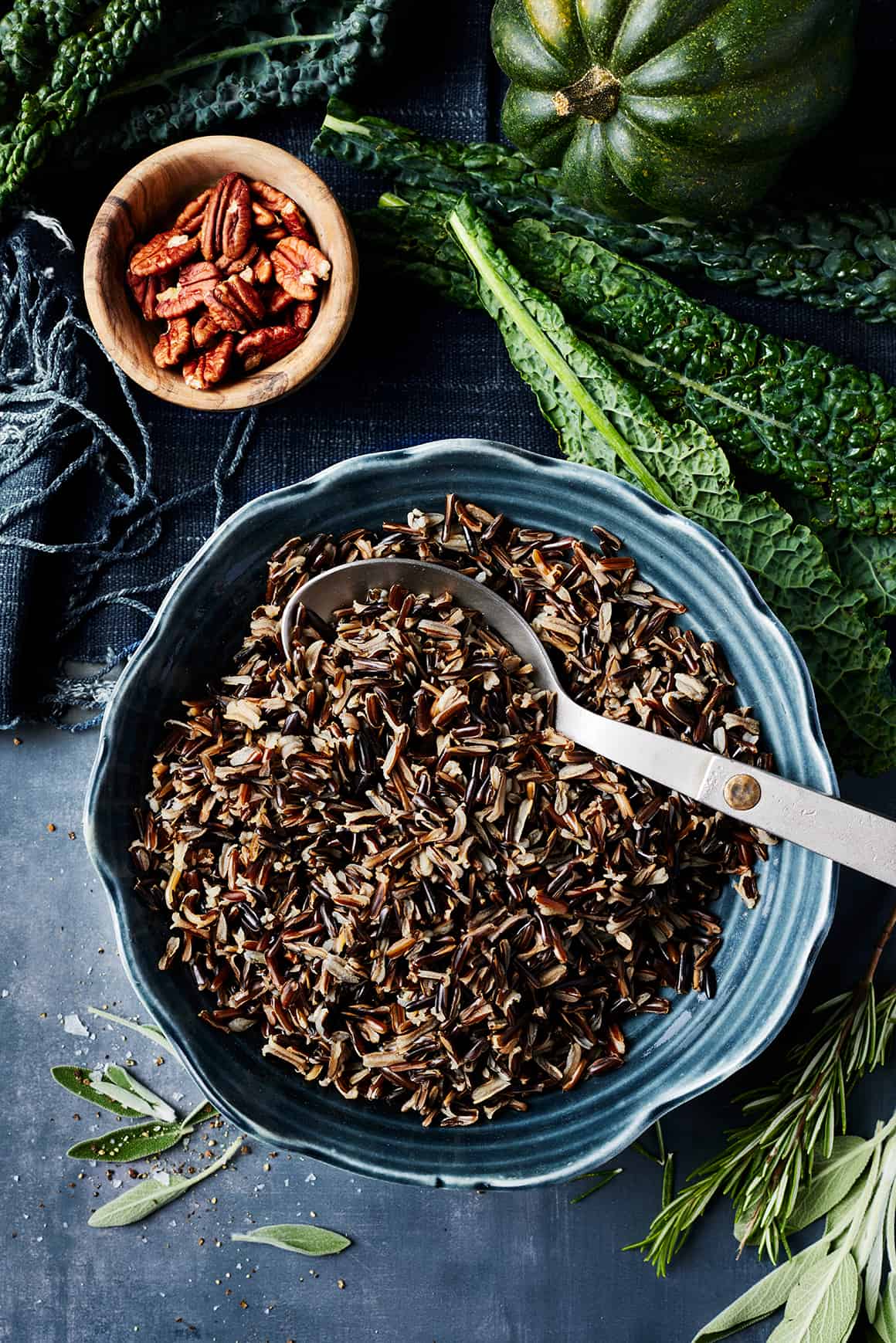
Troubleshooting Texture
Avoid mushy rice by using the right water amount. Wild rice needs about 3 to 4 cups of water per cup of rice. Cook it at a gentle simmer, not a rolling boil. Drain any extra water after cooking to keep grains firm.
Prevent undercooking by soaking wild rice for 30 minutes before cooking. This helps grains absorb water and cook evenly. Test rice by biting a grain—it should be tender but still chewy.
Sticky rice happens if grains release too much starch. Rinse wild rice under cold water before cooking to wash away excess starch. Stir rice gently during cooking to avoid clumps but do not over-stir.
Serving Suggestions
Wild rice pairs well with many dishes. For side dishes, try steamed vegetables or roasted carrots. It adds a nutty flavor and chewy texture.
In soups and salads, wild rice makes meals hearty. Add it to chicken soup or mix with fresh greens for a filling salad. It soaks up flavors well.
Use wild rice in main courses like stuffed peppers or casseroles. It works great with poultry, beef, or mushrooms. Its unique taste makes meals special.
Frequently Asked Questions
What Is The Ratio Of Wild Rice To Water?
Use a 1:3 ratio of wild rice to water. For every 1 cup of wild rice, add 3 cups of water.
Does Wild Rice Need To Be Soaked Before Cooking?
Wild rice does not need soaking before cooking. Rinse it briefly to remove debris, then cook directly in boiling water.
How Long Do You Cook Wild Rice For Compared To White Rice?
Wild rice cooks in 45-60 minutes, while white rice takes 15-20 minutes. Wild rice needs longer simmering.
What Happens If You Don’t Rinse Wild Rice Before Cooking?
Not rinsing wild rice leaves surface starch, causing a sticky, pasty texture after cooking. Rinsing also removes impurities and reduces arsenic.
Conclusion
Wild rice cooks slowly but yields a nutty, chewy texture. Rinse it well to remove dust and starch. Use plenty of water and simmer gently until grains split open. Taste often to avoid overcooking. Wild rice pairs well with vegetables, meats, and soups.
Store leftovers in the fridge for up to a week. With practice, cooking wild rice becomes simple and rewarding. Enjoy adding this healthy grain to your meals today.

Yes, working as , Food Blogger and Product Reviewer for last 6 years. Here you will get amazing deals for Smart kitchen products. I am your best source for the latest update in cooking trends. I provide insightful articles, reviews, and analysis on cutting-edge kitchen gadget. My mission is to empower readers with the knowledge they need to stay ahead in a rapidly evolving coking world. Join me as we explore the future of food technology and how it shapes our lives today and tomorrow.

